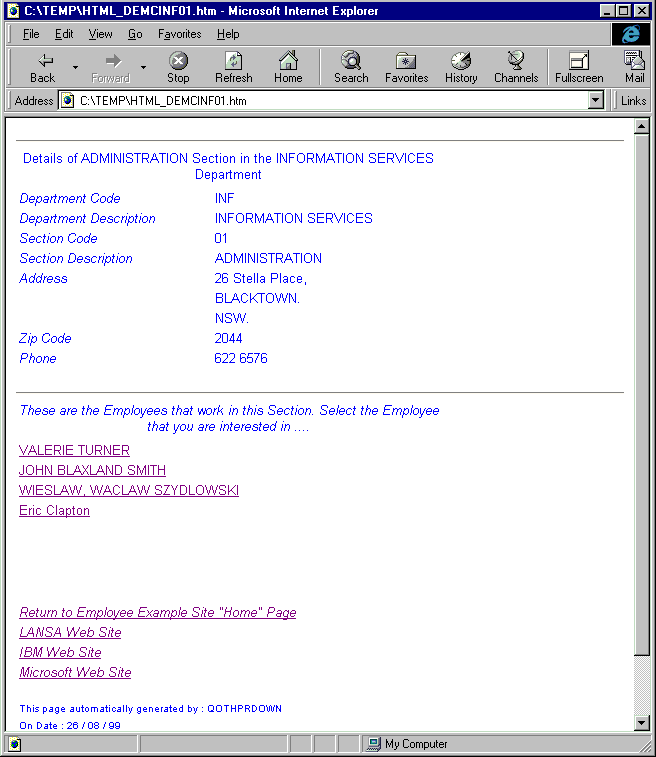Mass (Re)Generation of Static Web Pages
Example 152FC - Rating: advanced
Example 152FC - Rating: advanced
| The Things that Make Up this Example | To Execute this Example |
This example produces a sample Web "site" by creating a hyperlinked HTML document for each department, section and employee residing in the shipped demonstration database. It then generates and displays a "Home" page that acts as a root to the entire set of generated HTML documents.
By periodically and automatically (re)generating static HTML documents from information residing in core data base systems Web site maintenance costs can be reduced, general information availability increased and transactional system resource requirements reduced.
For example, a shipping company could create a transactional Web facility to access a database and dynamically present shipping schedule information to customers.
However, if shipping schedules are not changed that often, then the automatic overnight (re)generation of a series of hyperlinked schedule HTML documents may be a much easier to implement and less resource intensive way of conveying this information to customers.
This approach also allows the shipping schedule information to be served up by a HTTP server system that does not have direct access to the main scheduling database table(s). It also reduces system resource requirements because serving up static pages is far less resource intensive than running Web transactions.
Keywords


By periodically and automatically (re)generating static HTML documents from information residing in core data base systems Web site maintenance costs can be reduced, general information availability increased and transactional system resource requirements reduced.
For example, a shipping company could create a transactional Web facility to access a database and dynamically present shipping schedule information to customers.
However, if shipping schedules are not changed that often, then the automatic overnight (re)generation of a series of hyperlinked schedule HTML documents may be a much easier to implement and less resource intensive way of conveying this information to customers.
This approach also allows the shipping schedule information to be served up by a HTTP server system that does not have direct access to the main scheduling database table(s). It also reduces system resource requirements because serving up static pages is far less resource intensive than running Web transactions.
Keywords
| Web | Internet |
| HTML | Browser |
| Generate | Example 152FC |